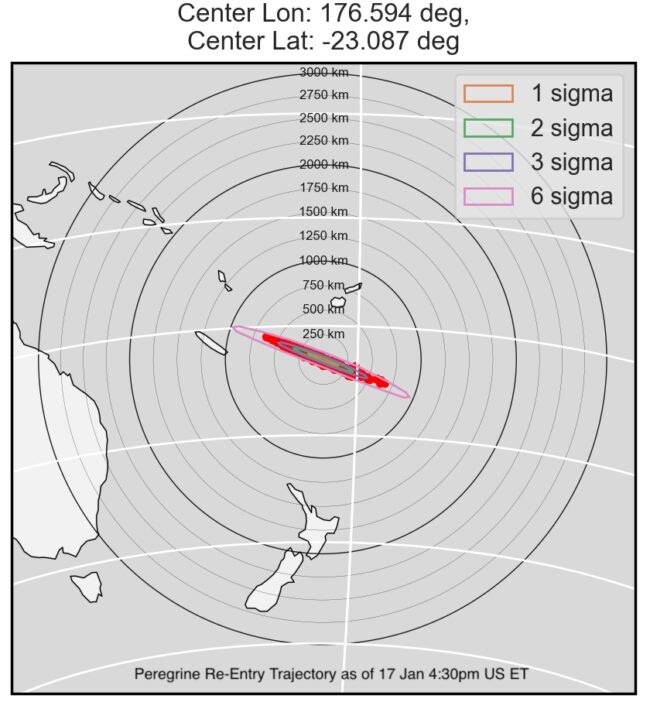
2024 lunar calendars on sale now. Makes a great gift! Check it out here.
Peregrine lunar lander crashed back to Earth
The private aerospace company Astrobotic reported on Thursday (January 18, 2024) that its Peregrine lunar lander has crashed back to Earth. The would-be moon craft burned up in Earth’s atmosphere, somewhere east of Australia, ending a 10-day-long saga that began with Peregrine’s apparent successful launch from Earth on January 8. In its most recent update, its 22nd since launch, Astrobotic reported that it lost telemetry with the spacecraft around 20:50 UTC, or 2:50 p.m. CST on January 18. By yesterday evening, Astrobotic was still awaiting confirmation of the reentry from government entities. It plans a teleconference with NASA at 18 UTC, or 1 p.m. EST on Friday, January 19, to discuss the updates. Listen to the teleconference here.
The bull’s-eye map above shows the most likely location where Peregrine burned up in Earth’s atmosphere, over the South Pacific.
The failed lunar lander began leaking fuel shortly after its launch on January 8 and thus was unable to complete its mission to the moon. Astrobotic’s 20th update on the mission on January 17 said:
Astrobotic has positioned the Peregrine spacecraft for a safe, controlled re-entry to Earth over a remote area of the South Pacific. The team has been continuously monitoring our re-entry analysis with NASA, which indicates a re-entry path over the indicated area below, with no anticipated hazards. A safe re-entry is our top priority …
Astrobotic – which is based in Pittsburgh – has done a great job communicating Peregrine’s situation day by day. Much appreciated! One can only imagine that the team is now ready for a nice long nap …
Welcome home #Peregrine. Thank you for being such a scrappy lil’ lander and for all the Science! @astrobotic you guys rock! ????? pic.twitter.com/IY5EjPL2f4
— Space By Storm (@SpaceByStorm) January 19, 2024
A few of our last shots of @astrobotic's Peregrine lander, firing its thrusters on its way to re-entry. Recorded today, from our station in Australia, between 17:32 and 18:32 UTC pic.twitter.com/INsHCzKpee
— s2a systems (@s2a_systems) January 18, 2024
Peregrine's final ground track. #PeregrineLunarLander pic.twitter.com/ruMyFJA6MP
— Tony Dunn (@tony873004) January 19, 2024
Problems after launch
So Astrobotic’s Peregrine lunar lander launched toward the moon on January 8. But the mission – which was to be the first commercial craft to land on the moon – was leaking fuel. Astrobotic has sent out regular updates with the mission’s progress as they’ve attempted to do some of the science. Four of the five science instruments onboard have been working. Plus, we’ve seen some images the spacecraft has taken on its new and unexpected journey. In its update from Monday, January 15, Astrobotic said:
The spacecraft continues to be responsive, operational, and stable, and remains on its previously reported trajectory toward Earth’s atmosphere. The propellant leak caused by the anomaly has practically stopped. The team continues to work with NASA and U.S. government agencies to assess the final trajectory path in which the vehicle is expected to burn up.
Read more about what Peregrine has achieved and the decision to send it into Earth’s atmosphere in Astrobotic’s 17th update.
After new data from JPL Horizons as well as the latest statement from @astrobotic it's now looking likely that #peregrine will return home, impacting Earth over the Great Barrier Reef on January 18. pic.twitter.com/hV3mGRgHIV
— Tony Dunn (@tony873004) January 13, 2024
A beautiful launch
Initially, there was huge excitement when the Peregrine lunar lander lifted off on January 8, 2024, riding aboard United Launch Alliance’s new Vulcan Centaur rocket. It was the first launch of a lunar lander from U.S. soil in decades. The launch itself was a success, as well as the separation from the Vulcan Centaur rocket. The lander was supposed to touch down on the lunar surface on February 23, 2024.
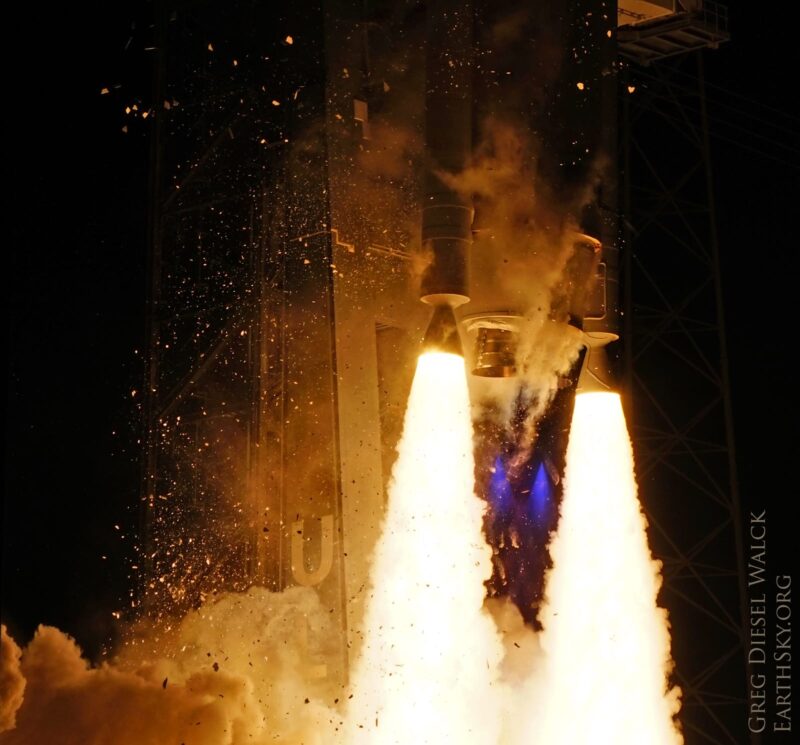

Lunar lander flight was packed with payloads
Funded in part by NASA, Peregrine Mission One was also carrying several small scientific instruments. The Agencia Espacial Mexicana (AEM), the German Aerospace Center (DLR) and European Space Agency (ESA) also flew science packages on Peregrine.
It launched with the science payloads were a variety of memorial, advertising, archival and citizen participation packages. Included were collections of photos of footprints from around the world, messages from children and even a lunar Bitcoin.
Plus, more poignantly, Peregrine was carrying capsules containing symbolic portions of cremated remains and DNA samples (a service offered by Houston-based Celestis, Inc., for a price), which were meant to go to the moon.
Among the samples is the DNA of legendary sci-fi writer Arthur C. Clarke.
Peregrine’s path through space
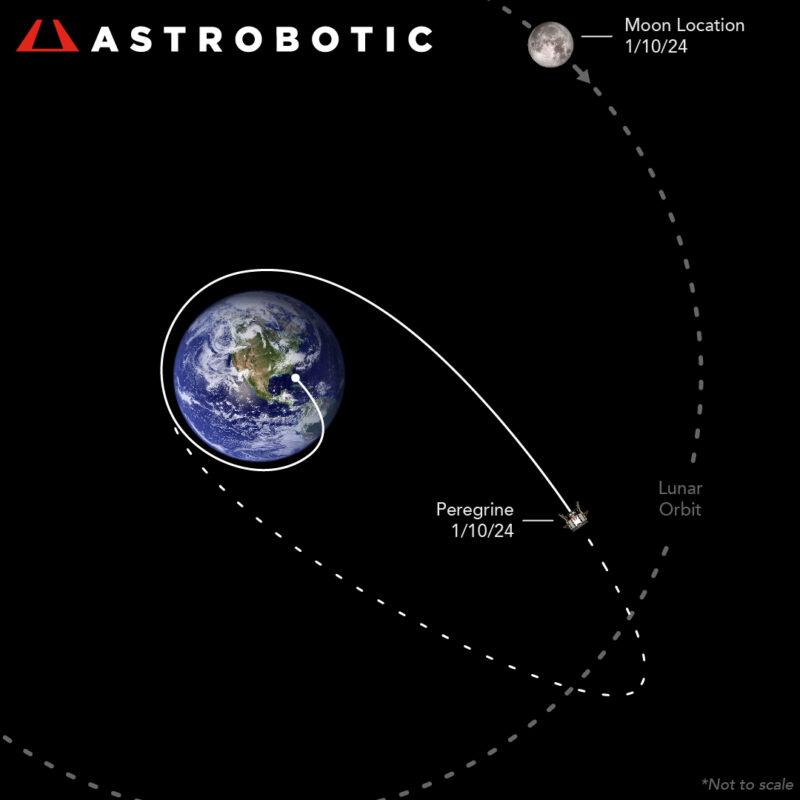
Update #10 for Peregrine Mission One: pic.twitter.com/lpLd6KF24Y
— Astrobotic (@astrobotic) January 10, 2024
It didn’t collide with the moon
For a while, according to Astrobotic and other experts on X – the platform formerly known as Twitter – Peregrine was thought to be on a collision course with the moon. But that wasn’t the case.
Update #6 for Peregrine Mission One: pic.twitter.com/lXh9kcubXs
— Astrobotic (@astrobotic) January 9, 2024
More Peregrine updates from Astrobotic
Update #5. Mission controllers worked feverishly to save what they could of the crippled spacecraft’s onboard science experiments and gather as much data as possible.
Update #5 for Peregrine Mission One: pic.twitter.com/94wy2J0GyA
— Astrobotic (@astrobotic) January 8, 2024
Update #4. Then, minutes later, it became clear Peregrine would not land on the lunar surface, as its propellent was leaking away into space.
Update #4 for Peregrine Mission One: pic.twitter.com/6uISAG3Je1
— Astrobotic (@astrobotic) January 8, 2024
Update #3. Mission controllers were able to regain control of the tumbling spacecraft and achieve a stable flight path, allowing Peregrine to charge its batteries. Yet the propulsion anomaly was now identified as a system failure:
Update #3 for Peregrine Mission One: pic.twitter.com/z4NK2achGG
— Astrobotic (@astrobotic) January 8, 2024
Update #2. They quickly identified the anomaly as a problem with the propulsion system, threatening the ability to land on the moon:
Update #2 on Peregrine Mission One: pic.twitter.com/hS5QsAihh4
— Astrobotic (@astrobotic) January 8, 2024
Update #1. Shortly after deploying from the rocket’s Centaur upper stage, Peregrine’s controllers at Astrobotic reported on X that the lander was unstable, as an unspecified problem prevented the craft from charging its onboard batteries:
An Update on Peregrine Mission One: pic.twitter.com/Q20dGVOMml
— Astrobotic (@astrobotic) January 8, 2024
Solar system’s smallest rover and tiny robots
The Peregrine lander wasn’t a large vehicle. It stood just 6.2 feet (1.9 meters) tall. And the rover it was carrying to the moon was tiny. Built by Carnegie Mellon University students in Pennsylvania, the Iris lunar rover weighed in at just 4.4 pounds (1.8 kilos). It was the smallest and lightest rover ever sent into space. The Iris website explained:
Iris’s shoebox-sized chassis and bottle cap wheels are made from carbon fiber, contributing to its lightweight design and another first for planetary robotics. Along with testing small, lightweight rover mobility on the moon, Iris is collecting scientific images for geological sciences, as well as UWB RF ranging data for testing new relative localization techniques.
The rover was still enormous compared to the robots the Mexican space agency hoped to send to the moon with Peregrine. Called COLMENA – Spanish for the hive – the project had hoped to test the ability of a swarm of robots to act autonomously:
The five robots each weigh less than 60 grams (0.1 pounds) and measure 12 centimeters (4.7 inches) in diameter. All of their electronics [were to be] less than two centimeters from the rocky rubble on the moon’s surface known as the lunar regolith.
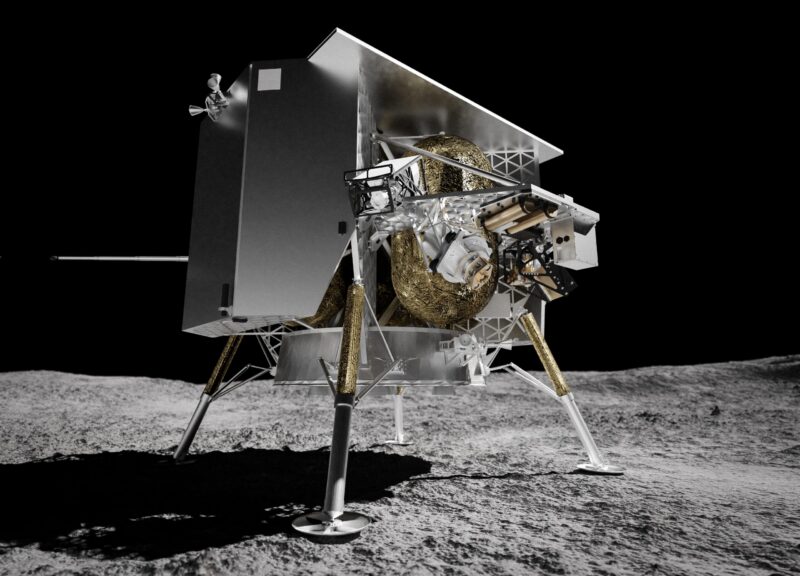
The Peregrine lunar lander was part of NASA’s preparation for Artemis
NASA has been working with several American companies in preparation for future Artemis missions to the moon. NASA calls it the Commercial Lunar Payload Services (CLPS) project. Part of having a human presence on the moon requires payloads sent to the moon to supply the astronauts with all their needs. As NASA said, these first commercial deliveries are meant to:
… perform science experiments, test technologies and demonstrate capabilities to help NASA explore the moon as it prepares for human missions.
NASA also provided a preliminary timeline – now long since out the window – for the journey to the moon:
After a 3-to-33-day Earth orbit and cruise to the moon, followed by a 4-to-25-day lunar orbit phase, it will descend and land in Sinus Viscositatis (Bay of Stickiness) adjacent to the Gruitheisen Domes on the northeast border of Oceanus Procellarum (Ocean of Storms). It is planned to land 55-110 hours after local sunrise and to operate for about 192 hours.
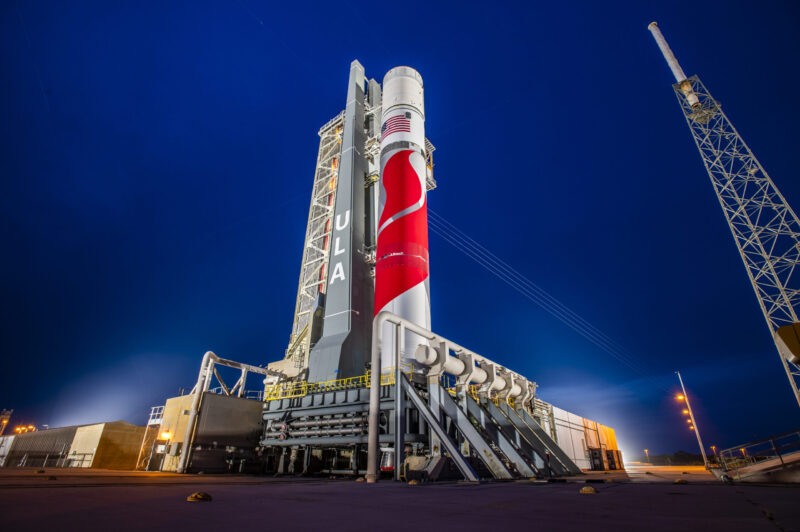
Bottom line: Peregrine was meant to be the 1st commercial lunar lander. But a fuel leak doomed the mission. Then yesterday – January 18, 2024 – spacecraft made a fiery reentry over Earth.











